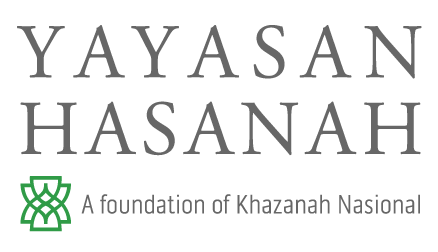Note: This is a continuation of an earlier post where Melanie Siow, Assistant Vice President for our Environment pillar, went on a field trip to the Ulu Muda forests. She tells of her experiential learning about the importance of protecting the water catchment area, with the landscape providing various ecosystem services. For example, ecotourism with its rich biodiversity and water supply services such as irrigation for stakeholders across three states – Kedah, Perlis, and Penang. However, rampant unsustainable logging activities are threatening this natural asset, calling upon immediate actions to halt the status quo. For example, Hasanah’s grant programme has been working towards the development of a roadmap for the protection of the Ulu Muda water catchment area since early 2018. There has also been an expression of political will by Kedah’s new Menteri Besar, Mukhriz Mahathir, since the change of government.
Fast forward 6 months after my field trip, I had the opportunity to visit the Ulu Muda project once again with Hasanah partners Water Watch Penang (WWP) and Management and Ecology of Malaysian Elephants (MEME). This time, however, it was with an entirely different atmosphere. Together with all relevant stakeholders – NGOs, private companies, government agencies, and community leaders – we gathered in two separate air-conditioned workshops in Kedah and Penang for a specific objective: obtain inputs and brainstorm ideas to develop a roadmap towards protection of the Ulu Muda water catchment area.
Prior to our brainstorming session, we were given an overview of the various challenges affecting conservation efforts, not just in Ulu Muda, but also experienced by many other critical environmental landscapes in Malaysia. We quickly learned that the crux of the problem lies in the lack of economic incentives available to state governments, who are responsible for the management of their state’s land resources. For example, only a small proportion of the national revenue collected by the Federal Government is disbursed back to state governments. It is estimated that they only receive 10 cents for every one ringgit disbursed to the Federal Government (Musa et al 2014). The nature of our Federal-State wealth distribution automatically removes incentives for land owners (i.e. the Kedah state government in the case of Ulu Muda) to choose forest conservation over logging, since the latter generates revenue, but not the former.
This is a harsh reality that cannot simply be ignored. It is in my opinion that for conservation efforts to be ramped up in Malaysia, environmental practitioners need to play a more significant role: not just creating general environmental awareness, or producing geospatial images of forest cover loss, or pouring more resources into states to manage land resources by NGOs and communities. These are no doubt important interventions, but they are not exactly hitting the right spot, or solving state governments’ main concern: “How will we be financially compensated?” To be able to answer this, environmental advocates must familiarise themselves with financial language, wearing the ‘economist’ hat, too. That means trying to convince decision-makers to switch towards sustainable practices not just from emotional standpoints, but also from the position of knowledge in terms of dollars and cents.
Hasanah puts a significant amount of effort in resolving this challenge, as evidenced by the outcome of these workshops, where stakeholders identified not only the most appropriate governance structure for protection of the Ulu Muda water catchment area, but also various financing mechanism options to be explored for the state government’s economic compensation. This includes but is not limited to: payment for ecosystem services, trust fund for conservation, polluter’s pay principle, and other more creative ideas such as ‘green’ insurance companies where investments could be channeled to conservation projects.

Norizan from WWF discussing various financing mechanisms for management of ecosystem services.
WWP also recently participated in another Hasanah-funded programme called Toolkit for Ecosystem Service Site-Based Assessment (TESSA), which aimed to build the capacity of conservation practitioners in the valuation of ecosystem services for evidence-based environmental advocacy purposes at their project sites. The toolkit provides a step-by-step method in establishing a project framework with multiple purposes in the decision-making context. For example, an organisation wants to address a policy change or key management issue within their site (to create a new protected area/manage water quality issues) or advocate against developments that threaten biodiversity and ecosystem services provided by their site. An instance could be that the State Government is earning RM1 million via logging, but logging activities resulted in RM1.5 million in flood damage costs, amounting to RM500k of net loss. This knowledge helps practitioners advocate from an objective economic standpoint.
Despite rolling out various transformative Hasanah-funded interventions in the conservation sector, much work still needs to be done. For example, during workshop networking sessions, I learned that many local environmental practitioners still do not have a good grasp of what ‘ecosystem services’ is, let alone pay for something when one is unsure of the purposes. Given that local environmental practitioners are often considered the loudest voice in the sector, this is also an area that needs to be addressed, so that we could equip these voices with a well-informed message, and leverage on this powerful vehicle to advocate for changes at a wider scale.
Reference:
Musa, N., Nawi, M. M., & Alias, N. (2014). Malaysian Federalism and Equal Wealth Distribution – A Case Study on the State Kelantan. World Congress of Constitutional Law.

